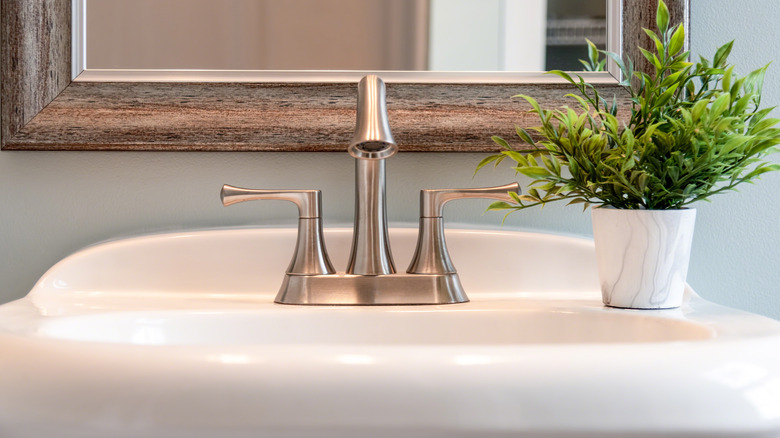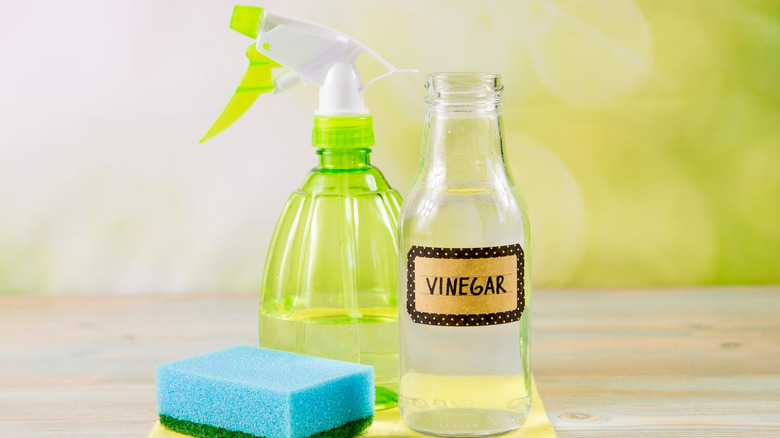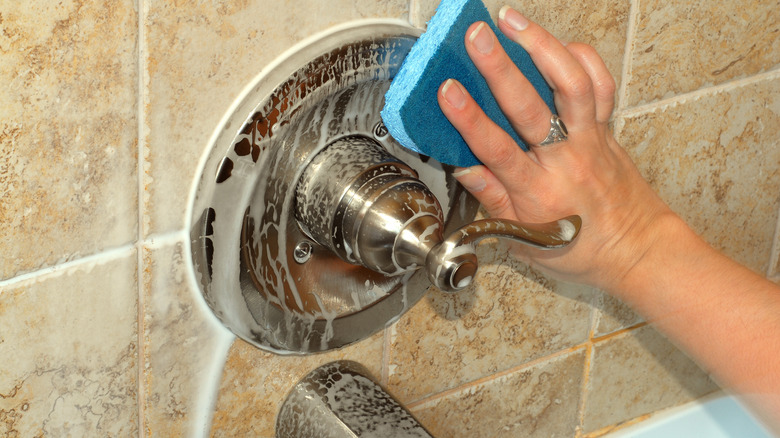The Best Way To Clean Nickel Hardware
Nickel is a metal familiar to Americans in the form of the eponymous five-cent coin (which is actually only 25% nickel and 75% copper). According to the Royal Society of Chemistry, the element's name is derived from the German word "kupfernickel" for devil's copper, and it originated in meteorites hundreds of millions of years old. Nickel is durable and somewhat impervious to corrosion and rust. Today, it is used to plate other metals and is a popular, low-maintenance hardware component.
Items commonly plated with nickel include kitchen and bathroom faucets, furniture knobs, and guitars. There are three distinct types of nickel, and cleaning each is a relatively straightforward, simple process. Polished nickel is the shiniest. The brushed form has a subtle matte finish achieved by etching with a wire brush, and satin nickel is generally treated with a lacquer, giving it an even more matte surface. Maids By Trade asserts that the same basic cleaning and polishing routines apply for all three nickel varieties, with a few minor individual differences. Prior to chrome's arrival in the 1920s, nickel ruled the roost for kitchen and bathroom fixtures, per the English Tapware Company. Its ease of care is one reason the metal is again competitive with chrome.
Basic cleaning ideas
Place a few drops of non-creamy dish soap on a damp rag and wipe the item. You can also use a spray-on glass cleaner. Avoid using a cleaner containing alcohol or ammonia. Mr. Kitchen Faucet suggests using a cotton ball with the glass cleaner to access a faucet's base. A soft toothbrush is another gentle tool you can use. Never employ an abrasive cloth, pad, or scrubber.
A 50-50 solution of water and white distilled vinegar will tackle hard water stains or other difficult-to-remove spots. Toothpaste, soap scum, or salt are some things that can affect nickel's finish but can be cleaned with relative ease. Spray the vinegar on a clean, lint-free cloth, then buff. Adding a tablespoon of cornstarch to this DIY solution will make it more potent if necessary. Don't spray directly on the nickel piece, and never soak nickel in vinegar or allow it to sit in the cleaning solution. Lime can gradually leave a film on brushed nickel, and How To's Guru recommends eliminating it with a commercial degreasing product. Should these basic methods prove insufficient, a commercial chrome polish like one you would use for hub caps would be worth a try. Brass polish can be used on satin nickel against tarnish. A good rule of thumb is clean nickel as mildly as possible, working more vigorously only as needed.
Cleaning, polishing, maintaining
Simple Green advises a twice-a-week regimen of cleaning and polishing your nickel items to safeguard against eventual corrosion. Dirt is less apt to accumulate on nickel fixtures if it is wiped off regularly using a damp, soft cloth, rag, or paper towel. Cleaning often will deter discoloration caused by greasy build-up, according to New York Hardware. Willow & Stone recommends polishing every other month to reverse the dulling of nickel's shine. The luster can be enhanced by applying paste wax monthly. Simply spread on a cloth and rub it in, then buff. A small, circular motion works best when cleaning or polishing nickel.
Toilet cleaners are too strong and abrasive for nickel and will potentially damage the surface. Tarnish- or rust-removing products must be avoided when polishing nickel, as those contain bleach. Using them will potentially subject the item to hydrochloric, hydrofluoric, or phosphoric acid, and the finish would suffer as a result. Alcohol is a no-no, and other than diluted vinegar, cleaners with an acid base will also damage the finish.
Nickel is a durable, mostly corrosion-resistant metal, and the satin variety is scratch-proof as well. Water spots and fingerprints are not readily visible, and smudges and stains don't stand out either. Simple cleaning is all it takes to keep your nickel looking its pristine best.



